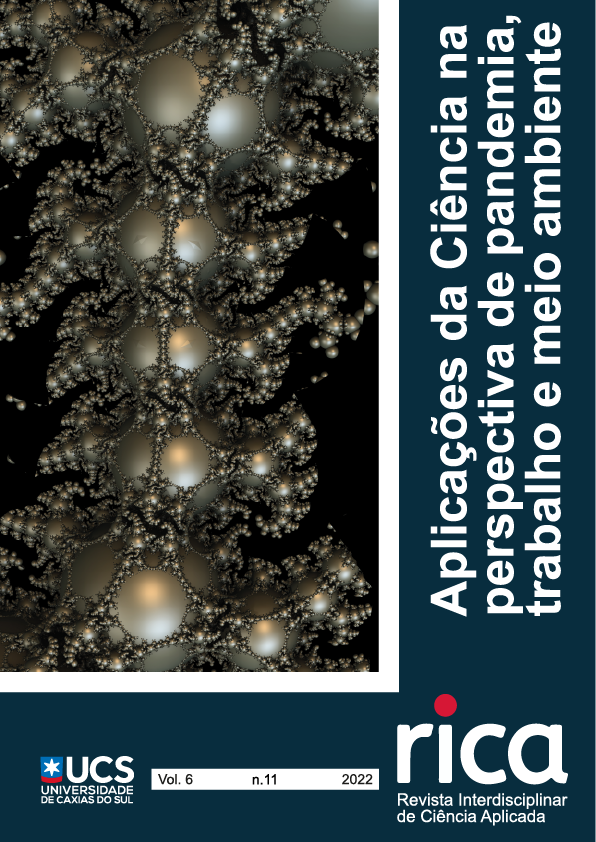Características do Rótulo Ambiental e suas Implicações para a Sustentabilidade Práticas de Mercado Rumo a uma Economia Circular
DOI:
https://doi.org/10.18226/25253824.v6.n11.08Palavras-chave:
Economia Circular, Desenvolvimento Sustentável, Rotulagem ambientalResumo
A gestão de resíduos passou por muitas mudanças desde o final do século 20, portanto, os produtos verdes têm ganhado cada vez mais atenção. Este trabalho tem como objetivo compreender a associação entre o uso de rótulos para comunicar uma imagem sustentável pelo marketing verde e seu impacto na percepção do consumidor. Foi realizada pesquisa qualitativa, de natureza teórica e empírica. A análise da relação entre a comunicação do marketing verde, voltada para a economia circular, pela perspectiva da rotulagem ambiental é a principal contribuição para a área de pesquisa. Em seguida, foi utilizada uma amostra de 60 embalagens de produtos em 15 segmentos e 50 marcas diferentes. Constata-se que a forma como o fabricante busca comunicar sobre o potencial de reutilização ou reciclagem do material utilizado na embalagem pode gerar dúvida no consumidor. Os resultados demonstram que nenhuma simbologia padrão é usada na rotulagem ambiental. As decisões de compra seriam influenciadas por informações sobre aspectos ambientais ou éticos dos produtos. Estudar como a indústria rotula seus produtos e os oferece ao consumidor certamente é uma forma de entender o grau de maturidade e o quanto se pode avançar em termos de consumo e produção sustentável. Ainda há uma baixa relação entre as teorias exploradas e seu uso efetivo na rotulagem ambiental, por isso sugere-se aprofundar essa lacuna em trabalhos futuros. Embora existam pesquisas sobre rotulagem ambiental, poucas buscam identificar em campo como os conceitos e normas têm sido efetivamente aplicados. Este estudo demonstra que ainda é necessário avançar tanto no entendimento do consumidor sobre o que os rótulos dizem, quanto nos aspectos de padronização dos rótulos pela indústria.
Referências
Yang, Y. C. (2017). Consumer Behavior towards Green Products. Journal of Economics, Business, and Management, 5(4).
Dórea, R. J. D. S., Lopes Silva, D. A., de Almeida Neto, J. A., & Rodrigues, L. B. (2022). Environmental Labeling: An Analysis of the Past 22 Years of Research. Journal of International Consumer Marketing, 34(2), 184-200.
Elkington, J. (1999). Cannibals with Forks: The Triple Bottom Line of 21st Century Business.
Ribeiro, H. C. M., Corrêa, R., Souza, M. T. S. (out.2014/mar.2015). Marketing Verde: Uma Análise Bibliométrica E Sociométrica Dos Últimos 20 Anos. Revista Gestão e Sustentabilidade Ambiental, Florianópolis, 3(2), 87-112.
Barros, M. C. L., Amato Neto, J. (2011). A study on sustainability common topics in operations management and industrial ecology publication. In European Operations Management Association (Euroma) Conference, 18., Cambridge, 2011. Book of abstracts. Cambridge: Universityof Cambridge; EurOMA.
Instituto Brasileiro De Defesa Da Natureza - IBDN. (2017). Selos de Sustentabilidade – Por que levar para minha empresa? http://www.ibdn.org.br/2017/07/12/selos-de-sustentabilidade-porque-levar-para-minha-empresa/ (accessed 15.05.2018).
Brasil. (2010). Lei n. 12.305, de 2 de agosto de 2010. Institui a Política Nacional de Resíduos Sólidos; altera a Lei no 9.605, de 12 de fevereiro de 1998; e dá outras providências. http://www.mma.gov.br/pol%C3%ADtica-de-res%C3%ADduos-s%C3%B3lidos (accessed 15.05.2018).
Cason, T. N., &Gangadharan, L. (2002). Environmental labeling and incomplete consumer information in laboratory markets. Journal of Environmental Economics and Management, 43(1), 113-134.
Bjørner, T. B., Hansen, L. G., & Russell, C. S. (2004). Environmental labeling and consumers’ choice—an empirical analysis of the effect of the Nordic Swan. Journal of environmental economics and management, 47(3), 411-434.
Grolleau, G., & Caswell, J. A. (2006). Interaction between food attributes in markets: the case of environmental labeling. Journal of Agricultural and Resource Economics, 471-484.
Boström M., Klintman M. (2008) Introduction: Green Consumerism, Green Labelling?. In: Eco-Standards, Product Labelling, and Green Consumerism. Consumption and Public Life. Palgrave Macmillan, London. https://doi.org/10.1057/9780230584006_1
Stern, P. C. (1999). Information, incentives, and proenvironmental consumer behavior. Journal of Consumer Policy, 22(4), 461-478.
Whitson, D., Ozkaya, H. E., & Roxas, J. (2014). Changes in consumer segments and preferences to green labelling. International Journal of Consumer Studies, 38(5), 458-466.
Schwartz, D., Loewenstein, G., & Agüero-Gaete, L. (2020). Encouraging pro-environmental behavior through green identity labelling. Nature Sustainability, 3(9), 746-752.
Pedersen, E. R., & Neergaard, P. (2006). Caveat emptor–let the buyer beware! Environmental labelling and the limitations of ‘green consumerism. Business strategy and the Environment, 15(1), 15-29.
O'rourke, D., Lollo, N. (2015). Transforming Consumption: From Decoupling to Behavior Change, to System Changes for Sustainable Consumption. Annual Review of Environment and Resources, 40(1), 233-259.
Dias, R. (2007). Marketing Ambiental. São Paulo: Editora Atlas.
Tandon, M. S., Sethi, V. (2017). An Analysis of the Determinants of Consumer Purchase Behavior Towards Green FMCG Products. The IUP Journal of Marketing Management, XVI(3).
Lee, K. M., & Stensel, H. D. (1999, February). ISO standards on environmental labels and declarations and its implications on the market. In Proceedings First International Symposium on Environmentally Conscious Design and Inverse Manufacturing, pp. 504-508. IEEE.
Dosi, C., & Moretto, M. (2001). Is ecolabelling a reliable environmental policy measure?. Environmental and Resource Economics, 18(1), 113-127.
Lyon, T. P., & Maxwell, J. W. (2002). ‘Voluntary’Approaches to Environmental Regulation: A Survey, in In M. Franzini & A. Nicita (eds.), Economic Institutions and Environmental Policy (Aldershot, Hampshire, UK: Ashgate Publishing Ltd.).
Delmas, M. A., & Burbano, V. C. (2011). The drivers of greenwashing. California management review, 54(1), 64-87.
Polonsky, M. J. An Introduction to Green Marketing. Electronic Green Journal, 1.
Ottman, J. A. (1994). Marketing Verde: desafios e Oportunidades para a nova era do Marketing. Ediçãonúmero 1ª ed. São Paulo: Makron Books Ltda.
Churchill, G. A. Jr., Peter, J. P. (2012). Marketing: criando valor para os clientes. Ediçãonúmero 3ª ed. São Paulo: Saraiva.
Tukker, A. (2015). Product services for a resource-efficient and circular economy – a review. Journal of Cleaner Production, 97, 76-91.
Chamberlin, L., Boks, C. (2018). Marketing Approaches for a Circular Economy: Using Design Frameworks to Interpret Online Communications. Sustainability, 10(6), 1-27.
Ellen Macarthur Foundation. (2012). Towards the Circular Economy. https://www.ellenmacarthurfoundation.org/pt/publicacoes (accessed 04.06.2018).
Sellitto, M. A. (2018). Assessment of the effectiveness of green practices in the management of two supply chains. Business Process Management Journal, 24(1), 23-48
Braga Junior, S., Martínez, M. P., Correa, C. M., Moura-Leite, R. C., Da Silva, D. (2019). Greenwashing effect, attitudes, and beliefs in green consumption. RAUSP Management Journal, 54(2), 226-241.
Instituto De Pesquisa Econômica Aplicada. (2013). IPEA: Boletim regional, urbano e ambiental. http://www.ipea.gov.br/agencia/images/stories/PDFs/boletim_regional/131127_boletimregional7_cap2.pdf (accessed 15.05.2018).
Andreoli, T. P., Lima, V. A., & Prearo, L. C. (2017). A (in) eficácia dos selos verdes sobre o comportamento dos consumidores: um estudo experimental. Revista Eletrônica de Ciência Administrativa, 16(1), 62-79.
Farias, F. G., Pinto, F. R., de Sousa Araújo, D., de Menezes, B. S., & de Andrade, R. D. (2021). Uma Década de Estudos sobre Economia Circular: Tendências e Reflexões Através de Análise Bibliométrica Internacional. Internext, 16(3), 289-305.
Associação Brasileira de Normas Técnicas - ABNT. (2009). Programa ABNT de Rotulagem Ambiental. Brasília, 4 dez. 2009. (Workshop InternacionalsobreRotulagem Ambiental).
Associação Brasileira Da Indústria De Plástico - ABIPLAST. (2016). INMETRO – Programa de Rotulagem Ambiental Tipo III – Declaração Ambiental de Produto (DAP). http://abiplast.org.br/noticias/inmetro--programa-de-rotulagem-ambiental-tipo-iii--declaracao-ambiental-de-produto-dap/20160329154107_J_185 (accessed 20.06.2018).
Webster, J., Watson, R. T. (2002). Analyzing the past to prepare for the future: writing a literature review. Mis Quarterly, 26(2).
Yin, R. K. (2015). Estudo de Caso: Planejamento e métodos. Bookman editora.
Creswell, J. W. (2010). Research design: Qualitative, quantitative, and mixed methods approach. California: Sage Publications.
Miguel, P. A. C. et al. (2012). Metodologia de pesquisa em engenharia de produção e gestão de operações. Ediçãonúmero 2ª ed. Rio de Janeiro: Elsevier.
Jugend, D., Rojas Luiz, J. V., ChiappettaJabbour, C. J., A Silva, S. L., Lopes De Sousa Jabbour, Salgado, M. H. (2017). Green product development, and product portfolio management: empirical evidence from an emerging economy. Business StrategyandtheEnvironment, 26(8), 1181-1195.
Compromisso Empresarial Para Reciclagem - CEMPRE. (2018). A Rotulagem Ambiental e o Consumidor no Mercado Brasileiro de Embalagens.
Milios, L. (2018). Advancing to a Circular Economy: three essential ingredients for a comprehensive policy mix. Sustainability Science, 13(3), 861-878.
Barboza, L. L., Bertassini, A. C., Gerolamo, M. C., & Ometto, A. R. (2022). VALORES RGANIZACIONAIS COMO SUPORTE PARA A ECONOMIA CIRCULAR E A SUSTENTABILIDADE. Revista de Administração de Empresas, 62.
Kuz, E. L., & Sehnem, S. Circular Economy Mainstream: an Analysis of Master Thesis and Dissertations Mainstream da Economia Circular: uma Análise de Teses e Dissertações de Mestrado.
Downloads
Publicado
Como Citar
Edição
Seção
Licença
Copyright (c) 2022 Karolina Crespi Gomes, Gabriela Almeida Marcon Nora, Cristiana Rennó D'Oliveira Andrade, Anete Alberton, Franciane Reinert Lyra

Este trabalho está licenciado sob uma licença Creative Commons Attribution 4.0 International License.
Autores mantém os direitos autorais e concedem à revista o direito de primeira publicação, com o trabalho simultaneamente licenciado sob a licença Creative Commons Atribuição 4.0 Internacional (CC BY 4.0), que permite o compartilhamento do trabalho com reconhecimento da autoria do trabalho e publicação inicial nesta revista.






